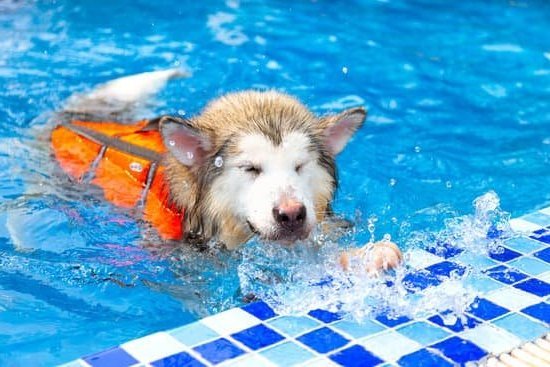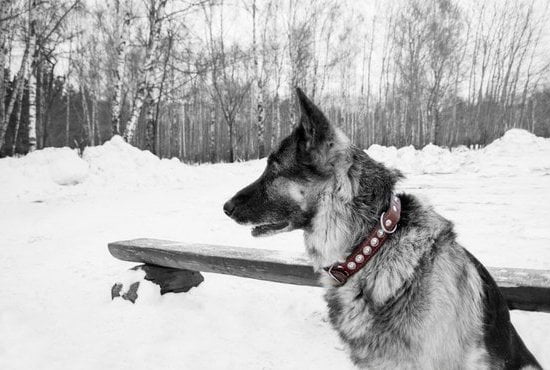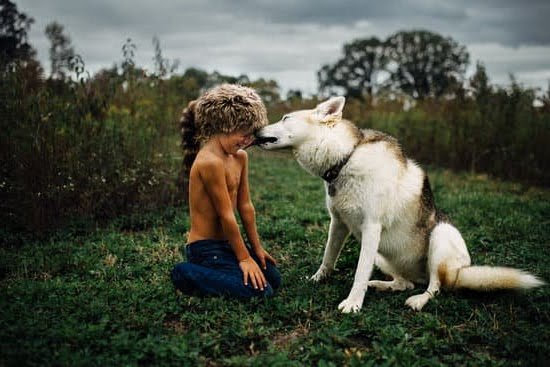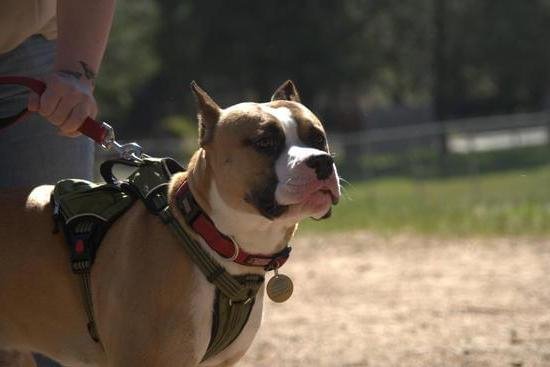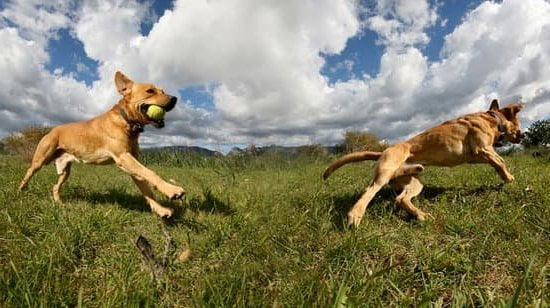Training your puppy like a service dog involves teaching them the necessary skills and behaviors to assist individuals with disabilities. This type of training goes beyond basic obedience commands and focuses on preparing your puppy for specific tasks that can help improve the quality of life for someone in need.
Service dogs are highly trained animals that provide invaluable support to individuals with physical, sensory, or psychiatric disabilities. They are trained to perform a wide range of tasks such as guiding the blind, alerting to seizures, retrieving dropped items, and providing emotional support. By training your own puppy like a service dog, you can potentially save thousands of dollars in professional training fees while also building an unbreakable bond with your furry companion.
In this article, we will explore the concept of training your puppy like a service dog and discuss the various benefits it offers. We will also delve into essential skills that need to be taught, suitable breeds for service dog training, strategies to handle distractions, and how to navigate public environments. Additionally, we will address the long-term commitment involved in maintaining their training and ensuring they consistently meet the high standards of a service dog.
By following the steps outlined in this article, you can begin your journey towards transforming your puppy into an exceptional service dog. Whether you have a specific task in mind or simply want to provide assistance and companionship to those in need, training your puppy as a service dog has numerous rewards both for you and for those who ultimately benefit from their exceptional abilities.
The Benefits of Training your Puppy to Act as a Service Dog
Training your puppy to act as a service dog offers numerous benefits both for the dog and the owner. By investing time and effort into this specialized training, you are not only preparing your puppy to assist individuals with disabilities, but you are also enhancing their overall well-being and quality of life.
Purposeful Companionship
One of the main benefits of training your puppy to become a service dog is the purposeful companionship they will provide. Service dogs are trained to perform specific tasks that can greatly improve the lives of individuals with disabilities. Whether it is guiding someone who is visually impaired or alerting someone with epilepsy to an oncoming seizure, these highly skilled dogs offer invaluable assistance and support.
By training your puppy to act as a service dog, you are ensuring that they will have a meaningful job and purpose in life. This type of training provides mental stimulation and keeps them engaged, preventing boredom and destructive behaviors that often occur in untrained or under-stimulated dogs.
Enhanced Bond
Training your puppy as a service dog also strengthens the bond between you and your furry companion. The time spent together during training sessions builds trust, communication, and understanding. As you work together towards common goals, your relationship deepens, resulting in a strong connection built on mutual respect.
Training sessions provide an opportunity for positive reinforcement-based interactions where praise and rewards are used to encourage desired behaviors. This consistent positive reinforcement fosters a sense of trust and cooperation between you and your puppy, creating a solid foundation for a lifelong partnership.
Increased Socialization
Another notable benefit of training your puppy as a service dog is increased socialization opportunities for both the dog and the owner. Well-trained service dogs often accompany their owners to various public places such as restaurants, shopping centers, or airports.
During these outings, both puppies in training and their owners encounter numerous people, animals, and stimuli, which helps them become well-adjusted and confident in different environments. This exposure to diverse situations and social interactions contributes to the dog’s ability to remain calm and focused while on duty.
Additionally, the presence of a service dog can also facilitate positive social interactions for their owners as they serve as a conversation starter. This can enhance the owner’s social life and reduce feelings of isolation or exclusion that may be associated with their disability. Overall, training your puppy to become a service dog not only benefits their individual development but also promotes inclusivity and interaction within society.
Identifying Suitable Breeds for Service Dog Training
When it comes to training a puppy to become a service dog, choosing the right breed is crucial. Not all dogs are suitable for the rigorous demands and specific tasks required of service dogs. It is important to identify breeds that possess the necessary characteristics and temperament to excel in this role.
One key factor to consider when selecting a breed for service dog training is size. Different tasks may require different sizes of dogs. For example, mobility assistance tasks often require larger breeds that can provide the necessary stability and strength. On the other hand, smaller breeds may be more suitable for tasks such as alerting or psychiatric support.
Temperament is another crucial aspect to consider when identifying suitable breeds. Ideally, service dogs should possess traits such as intelligence, trainability, and calmness under pressure. They should be able to remain focused on their tasks while remaining obedient and responsive to their handler’s commands.
Some common breeds that are frequently chosen for service dog training include Labrador Retrievers, Golden Retrievers, German Shepherds, and Border Collies. These breeds are known for their intelligence, trainability, and willingness to please their handlers.
It is important to note that while certain breeds may have tendencies towards certain traits, individual temperament can vary within a breed. Each dog should be assessed on an individual basis for their suitability for service dog training.
Setting the Foundation
When it comes to training your puppy like a service dog, setting a strong foundation is crucial. This begins with puppy socialization and basic obedience training. The early months of your puppy’s life are a critical time for them to learn how to interact with the world around them and develop important social skills. Basic obedience training provides the groundwork for more advanced service dog skills.
Puppy Socialization
Puppy socialization involves exposing your pup to as many different people, animals, environments, and situations as possible in a positive and controlled manner. This helps them become well-rounded dogs capable of handling various scenarios they may encounter when working as a service dog. Start by introducing your pup to family members, friends, and other pets in a calm and controlled environment.
Gradually expose them to new experiences such as walks in the park, car rides, visiting different homes, or attending puppy classes. Remember to always prioritize their safety and ensure that interactions are positive and stress-free for your puppy.
Basic Obedience Training
Teaching your puppy basic obedience commands is essential for any dog, but it is especially important for service dogs. The commands they learn at this stage lay the groundwork for more advanced tasks they will be trained to perform later on. Start with simple commands such as sit, stay, come, lie down, and leave it.
Use positive reinforcement techniques like treats or praise to reward your pup when they successfully follow these commands. Be patient and consistent during training sessions, keeping them short but frequent to maintain their focus and motivation.
By focusing on puppy socialization and basic obedience training early on, you are establishing a solid foundation that will support your puppy’s growth into an exceptional service dog. These initial stages not only help build their confidence but also create a bond between you and your pup based on trust and effective communication.
In the next section, we will explore how positive reinforcement plays a vital role in shaping your puppy’s behaviors and facilitating their service dog training journey.
Shaping Desired Behaviors
When it comes to training your puppy like a service dog, creating a positive reinforcement training plan is essential. This type of training focuses on rewarding and reinforcing the behaviors you want, rather than punishing or correcting undesirable behaviors. By using positive reinforcement, you are not only teaching your puppy new skills but also building a strong bond and trust between you and your pup.
To create an effective positive reinforcement training plan for your puppy, it is important to follow these steps:
- Identify the desired behaviors: Determine which specific behaviors you want to teach your puppy. For example, if you want your dog to be able to open doors or retrieve objects, start by breaking down those tasks into smaller steps.
- Choose appropriate rewards: Find out what motivates your puppy the most. It can be treats, praise, playtime, or a combination of different rewards. Use high-value rewards for more challenging tasks and lower-value rewards for easier tasks.
- Timing is everything: Timing is crucial in positive reinforcement training. Remember to reward your puppy immediately after they perform the desired behavior so that they can associate the reward with the action they just did.
- Start small and gradually increase difficulty: Begin by teaching simple commands and gradually progress to more complex tasks as your puppy becomes more proficient in their training. Building a solid foundation of basic obedience skills will make it easier for them to learn advanced service dog skills later on.
- Be consistent and patient: Consistency is key in any kind of dog training. Stick to the same cues and rewards throughout the training process to avoid confusion. Also, remember that puppies have short attention spans, so be patient and take breaks when needed.
By following these steps and creating a positive reinforcement training plan tailored specifically for your puppy’s needs, you will be setting them up for success in their journey towards becoming an exceptional service dog.
Teaching Essential Service Dog Skills
Focus Training
One of the essential skills for a service dog is the ability to maintain focus on their handler. Focus training teaches your puppy to pay attention to you and ignore distractions in their environment. This skill is crucial in ensuring that the dog can perform tasks and provide assistance when needed.
To train focus, start with short training sessions in a quiet environment. Use treats or a clicker as positive reinforcement. Begin by holding a treat near your face, and when your puppy looks at you, reward them with the treat. Gradually increase the duration of eye contact before giving the treat. Practice this exercise in different environments with increasing distractions to help your puppy generalize the skill.
Loose Leash Walking
Another important skill for a service dog is loose leash walking. Service dogs need to walk calmly beside their handlers without pulling or getting distracted by their surroundings. Teaching loose leash walking requires consistency and patience.
Start by using a properly fitted harness or collar and a sturdy leash. Begin walking with your puppy and reward them for staying close to you without pulling on the leash. If they start to pull, stop immediately and wait for them to come back towards you before continuing the walk. Reward them when they are walking calmly beside you.
Remember to be consistent with your expectations and rewards during loose leash training. Gradually increase the duration and difficulty of walks as your puppy becomes more proficient at walking nicely on a loose leash.
Task Training
Service dogs are trained to perform specific tasks that assist individuals with disabilities. Task training encompasses teaching your puppy how to carry out these specific duties according to your needs.
Start by identifying tasks that will be useful for you or someone you know who may benefit from having a service dog perform them. Common tasks include retrieving items, opening doors, turning lights on/off, alerting to sounds or seizures, among others.
To teach task training, break the task down into smaller steps and use positive reinforcement to reward your puppy for each step they successfully complete. Be patient, as it may take time for your puppy to fully understand and master the task. Consistent practice and reinforcement will help them become proficient in performing their service dog duties.
By focusing on teaching essential service dog skills such as focus, loose leash walking, and task training, you are laying a solid foundation for your puppy to become an exceptional service dog. These skills form the cornerstone of their training journey and will prepare them for the more advanced tasks and challenges they may face in the future.
Handling Distractions
When training your puppy to be a service dog, one of the most important skills to teach is how to remain focused in the presence of distractions. Service dogs need to stay attentive and responsive regardless of the environment they are in, so it’s crucial to have effective strategies in place to help your puppy maintain their focus. Here are some strategies that can assist you in handling distractions during your training sessions:
- Start small: Begin by introducing distractions gradually and in controlled settings. For example, start by having someone walk past your puppy while they are practicing sitting or lying down. As your pup becomes more comfortable and focused, gradually increase the level of distraction.
- Use positive reinforcement: Continuously reinforce focus and attention with rewards such as treats, praise, or playtime. When your puppy successfully remains focused despite distractions, make sure to provide immediate positive reinforcement to reinforce the desired behavior.
- Stay calm and patient: It is essential for you as a trainer to remain calm and patient when facing distractions. Dogs are highly sensitive to their handler’s emotions, so staying calm will help create a positive environment for training.
Another effective strategy for handling distractions is implementing a “look at me” command. This command teaches your puppy to shift their attention back to you when faced with something distracting. To train this command:
- Start in a low-distraction environment: Begin by practicing in an area where there are minimal distractions. Hold a treat near your face and say “look at me.” When your puppy makes eye contact with you, immediately praise and reward them.
- Add gradual distractions: Once your puppy understands the command in a low-distraction environment, start introducing distractions one at a time. For example, have someone walk by or introduce a loud noise. Each time your puppy is able to maintain focus on you despite the distraction, reward them.
- Practice consistently and in different environments: As your puppy progresses, continue practicing the “look at me” command in various settings with increasing distractions. This will help them generalize the behavior and maintain focus no matter the situation.
Remember, consistency and repetition are key when training your puppy to handle distractions. By gradually exposing them to distractions and reinforcing their focus, you can help them develop the skills necessary to become an exceptional service dog.
Embracing Public Access Training
One of the key aspects of training your puppy to be a service dog is preparing them for public access. This involves exposing your puppy to a wide range of environments, people, and situations so that they can confidently navigate different settings with ease. Public access training is crucial for ensuring that your puppy becomes a well-rounded and reliable service dog. Here are some strategies to help you prepare your puppy for various environments.
- Gradual Exposure: Start by introducing your puppy to low-stress environments such as quiet parks or calm residential areas. Allow them to explore and become comfortable in these spaces before gradually progressing to more stimulating environments like crowded streets or busy shopping centers. This gradual exposure will help prevent overwhelming your puppy and build their confidence over time.
- Socialization with People: It’s important for service dogs to be comfortable around all types of people, including strangers. Encourage positive interactions between your puppy and a diverse range of individuals, including adults, children, seniors, and people with disabilities. Expose them to different body types, hairstyles, clothing styles, and assistive devices so that they learn not to react negatively or get startled in such situations.
- Desensitization to Environmental Stimuli: Service dogs need to stay focused on their handler despite any distractions in the environment. Train your puppy to ignore common environmental stimuli such as loud noises (e.g., traffic, sirens), moving objects (e.g., bicycles, skateboards), and unusual smells (e.g., garbage bins). Gradually increase the intensity of these distractions during training sessions so that your pup learns how to remain calm and composed wherever they go.
Remember, each dog is unique in their learning style and tolerance levels; therefore, tailor the training plan according to their individual needs. Consistency is key when it comes to public access training – ensure that you practice regularly and provide plenty of positive reinforcement for desired behaviors. With time, patience, and dedication, your puppy will become well-prepared to handle various environments as a service dog.
Fine-Tuning and Proofing Training
After you have successfully taught your puppy the essential service dog skills and they have mastered them, it is important to continue fine-tuning and proofing their training. This is crucial in maintaining consistency and progression in their development as a service dog. Fine-tuning involves reinforcing the behaviors your puppy has already learned and making them more reliable, while proofing refers to practicing those behaviors in a variety of settings and situations.
Consistency is key when fine-tuning your puppy’s training. It is important to continue using positive reinforcement techniques such as rewards and praise consistently, so your dog understands what is expected of them. This includes being consistent with cues or commands you use, ensuring that they are clear and easily understood by your puppy.
Proofing your puppy’s training requires gradually exposing them to different environments, distractions, and situations. Start with low-level distractions and gradually increase the difficulty over time. For example, if your puppy has been trained to focus on you even with mild distractions at home, practice the same behavior in a park where there may be more distractions such as other dogs or people playing sports.
To maintain progression in your puppy’s training, it is important to continuously challenge them by introducing new tasks or cue combinations. This will keep their minds stimulated and prevent boredom or plateauing in their learning. Remember to always set realistic expectations for your dog based on their breed, age, and individual abilities.
Tracking your puppy’s progress through documentation can be helpful during the fine-tuning and proofing phase. Keep a training journal where you record milestones, challenges faced, areas of improvement, and specific goals for each session. This will allow you to track their growth as a service dog over time and identify any patterns or areas that may need extra attention.
Overall, fine-tuning and proofing training require dedication, patience, and consistent effort from both you and your puppy. By maintaining consistency in reinforcement techniques, gradually exposing them to different environments, and continuously challenging them to learn new tasks, you can ensure your puppy continues to progress as an exceptional service dog.
| Fine-Tuning and Proofing Training | Maintaining Consistency and Progression |
|---|---|
| Consistency: continue using positive reinforcement techniques and clear cues or commands | Proofing: expose your puppy to different environments and distractions gradually |
| Set realistic expectations based on breed, age, and abilities | Tracking progress through documentation in a training journal |
| Maintain dedication, patience, and consistent effort from both owner and puppy | Challenge the puppy with new tasks to prevent boredom or plateauing in learning |
The Long-Term Commitment
Regular maintenance and ongoing training are crucial in ensuring that your puppy maintains the high standards required to be a quality service dog. Training is not a one-time event, but rather a lifelong commitment that requires consistent effort and practice. In this section, we will explore the importance of regular maintenance and ongoing training for service dog quality.
One of the key aspects of regular maintenance is keeping up with obedience training. Even after your puppy has mastered basic commands, it is important to continue reinforcing these behaviors on a regular basis. This helps to ensure that your puppy remains responsive and well-behaved in a variety of situations. Regular practice sessions can also help to keep your puppy mentally stimulated and prevent boredom.
Another aspect of regular maintenance is regularly exposing your puppy to different environments and situations. This helps to acclimate them to common scenarios they may encounter while working as a service dog. Gradually increasing the difficulty level of these environments can help prepare your dog for real-life situations they may face in their role as a service dog.
Ongoing training goes beyond just obedience skills and exposure to different environments. It involves continuously teaching your dog new tasks and behaviors that are specific to their service role. As your puppy grows and develops, you may find the need to refine or expand upon their existing skills. Ongoing training provides an opportunity for continued growth and improvement.
Regular maintenance and ongoing training require consistency, patience, and dedication from both you as the trainer and your puppy as the learner. It is important to remember that every dog is unique, so it’s essential to tailor the training program to suit their individual needs. By committing yourself to regular maintenance and ongoing training, you are setting your puppy up for success in their role as a service dog.
| Training Aspect | Description |
|---|---|
| Obedience Training | Continuing to reinforce basic commands on a regular basis to maintain responsiveness and good behavior. |
| Exposure to Different Environments | Regularly exposing your puppy to different environments and situations to prepare them for real-life scenarios. |
| Ongoing Task Training | Continuously teaching your dog new tasks and behaviors that are specific to their service role, allowing for growth and improvement. |
Conclusion
Training your puppy to act as a service dog is no easy task, but the benefits are countless. Not only will you have a loyal and well-behaved companion, but you will also be able to make a positive impact on the lives of others. From identifying suitable breeds for service dog training to fine-tuning and proofing their skills, this journey requires commitment and dedication.
The foundation of training begins with puppy socialization and basic obedience training. This is where your puppy learns how to interact with people and other animals in a positive way, as well as the basic commands such as sit, stay, and come. By establishing this strong foundation, you are setting your puppy up for success in their future service dog role.
Once the basics are mastered, it’s time to shape desired behaviors through positive reinforcement training. This involves rewarding good behavior with treats or praise, helping your puppy understand what is expected of them. Essential service dog skills such as focus, loose leash walking, and task training can then be taught using this positive reinforcement approach.
Handling distractions is an important aspect of service dog training. Strategies such as desensitization and counterconditioning can help your puppy remain focused even in challenging situations. Gradually exposing them to different environments will prepare them for public access training, where they learn how to behave appropriately in various settings.
Maintaining consistency and progression is crucial for long-term success. Fine-tuning and proofing your puppy’s training ensures that they continue to meet the high standards required of a service dog. Regular maintenance and ongoing training not only keep their skills sharp but also deepen the bond between you and your furry companion.
In conclusion, the journey of training your puppy into becoming an exceptional service dog requires time, effort, and patience. However, with dedication and the right techniques outlined in this article, you can mold your furry friend into a valuable asset that enriches both your life and the lives of those around you.
Remember, while the road may be challenging, the rewards are immeasurable. So start your journey today and embark on the path of transforming your beloved puppy into an exceptional service dog.
Frequently Asked Questions
How do I get my dog to behave like a service dog?
Getting a dog to behave like a service dog requires consistent training, patience, and proper socialization. Start by teaching basic obedience commands such as sit, stay, down, and come. Gradually introduce more advanced tasks specific to the service dog’s role.
It is important to use positive reinforcement techniques, rewarding desired behaviors with treats or praise. Consistency is key in shaping the dog’s behavior, so ensure that everyone in the household is on the same page and follows the established training routines. Additionally, exposing the dog to various environments and situations will help them develop the necessary self-control and adaptability required for service work.
How do you know if a puppy will make a good service dog?
Assessing whether a puppy will make a suitable service dog involves considering several factors. Firstly, evaluate the puppy’s temperament and personality traits such as confidence, adaptability, friendliness towards strangers, and eagerness to learn. Look for puppies that are attentive and easily trainable as they will likely excel in service work.
Health is another crucial aspect – check if the puppy comes from healthy parents without any genetic predispositions that might hinder their ability to perform as a service dog. Finally, consult with an experienced trainer or organization who can use standardized tests or assessments to gauge a puppy’s potential suitability for service work.
What training method is used for service dogs?
There are various training methods used for service dogs, but positive reinforcement training is widely recognized as one of the most effective approaches. This method involves rewarding desired behaviors through treats, praise, or play rather than using punishment or aversive techniques. Positive reinforcement helps build a strong bond between handler and dog while increasing motivation and enthusiasm for learning new tasks.
The training process typically starts with teaching basic obedience commands before gradually introducing more complex skills needed for their particular service role. In addition to positive reinforcement training techniques, it may also involve desensitization to distractions and socialization in different environments to ensure well-rounded behavior in real-life situations.

Welcome to the blog! I am a professional dog trainer and have been working with dogs for many years. In this blog, I will be discussing various topics related to dog training, including tips, tricks, and advice. I hope you find this information helpful and informative. Thanks for reading!

